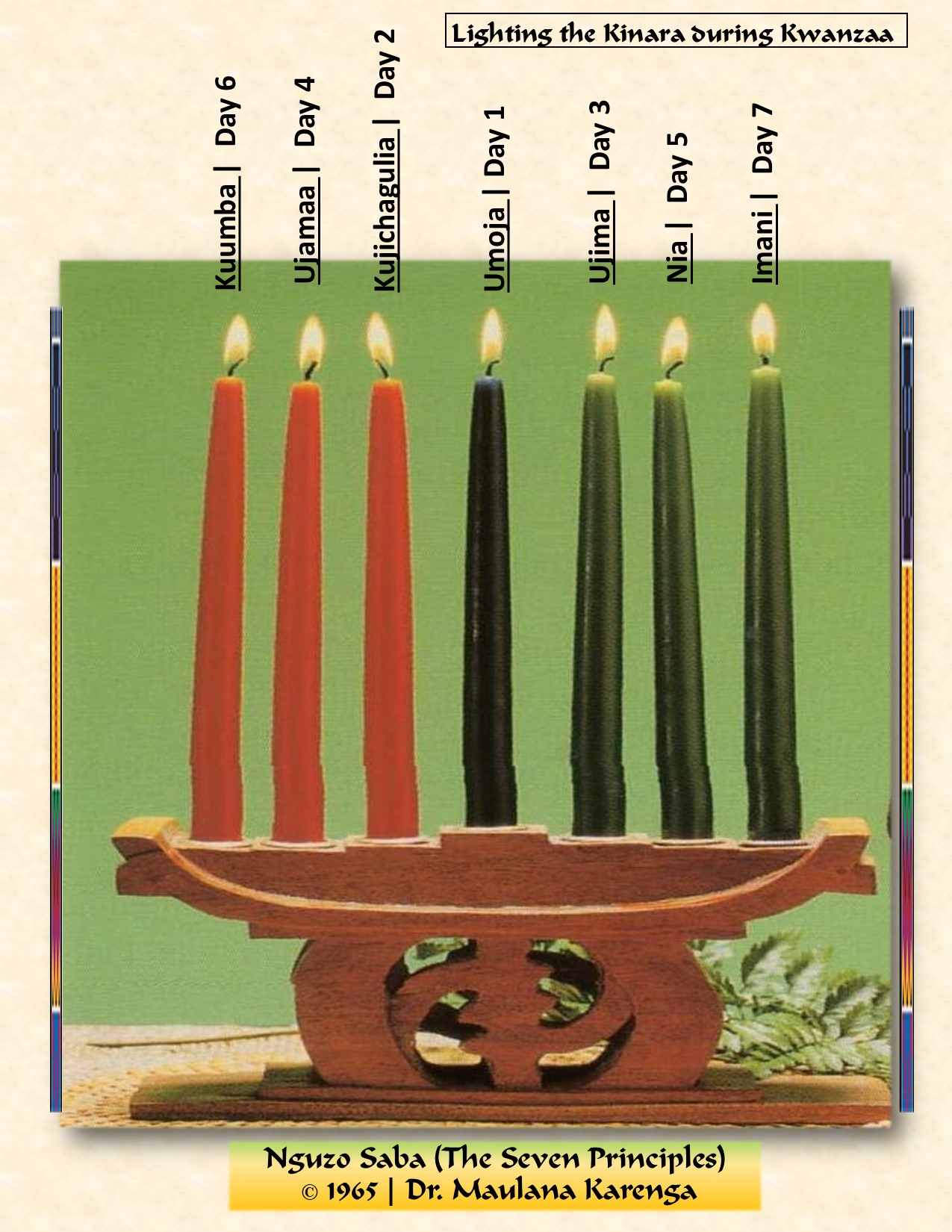The Celebration

Preparation
There is a traditionally established way of celebrating Kwanzaa. We should therefore observe these guidelines to make our Kwanzaa the most beautiful and engaging one and to keep the tradition. Without definite guidelines and core values and practices there is no holiday.
First, you should come to the celebration with a profound respect for its values, symbols and practices and do nothing to violate its integrity, beauty and expansive meaning. Secondly, you should not mix the Kwanzaa holiday or its symbols, values and practice with any other culture. This would violate the principles of Kujichagulia (Self-Determination) and thus violate the integrity of the holiday.
Thirdly, choose the best and most beautiful items to celebrate Kwanzaa. This means taking time to plan and select the most beautiful objects of art, colorful African cloth, fresh fruits and vegetables, etc. so that every object used represents African culture and your commitment to the holiday in the best of ways.
Candle Lighting
First, a central place in the home for the Kwanzaa Set, the symbols of Kwanzaa is chosen. A table is then spread with a beautiful piece of African cloth. Then, the mkeka (mat) is placed down and all of the other symbols are placed on it or immediately next to it to symbolize our rootedness in our tradition. Next the Kinara (candle holder) is placed on the mat and the Mishumaa Saba (seven candles) are placed in the kinara.
The colors of Kwanzaa are black, red and green; black for the people, red for their struggle, and green for the future and hope that comes from their struggle. Therefore there is one black candle, three red and three green candles. These are the mishumaa saba (the seven candles) and they represent the Seven Principles. The black candle represents the first principle Umoja (unity) and is placed in the center of the kinara. The red candles represent the principles of Kujichagulia (self-determination), Ujamaa (cooperative economics) and Kuumba (creativity) and are placed to the left of the black candle. The green candles represent the principles of Ujima (collective work and responsibility), Nia (purpose) and Imani (faith) and are placed to the right of the black candle. The black candle is lit first on the first day of the celebration. And the remaining candles are lit afterwards from left to right on the following days. This procedure is to indicate that the people come first, then the struggle and then the hope that comes from the struggle.
